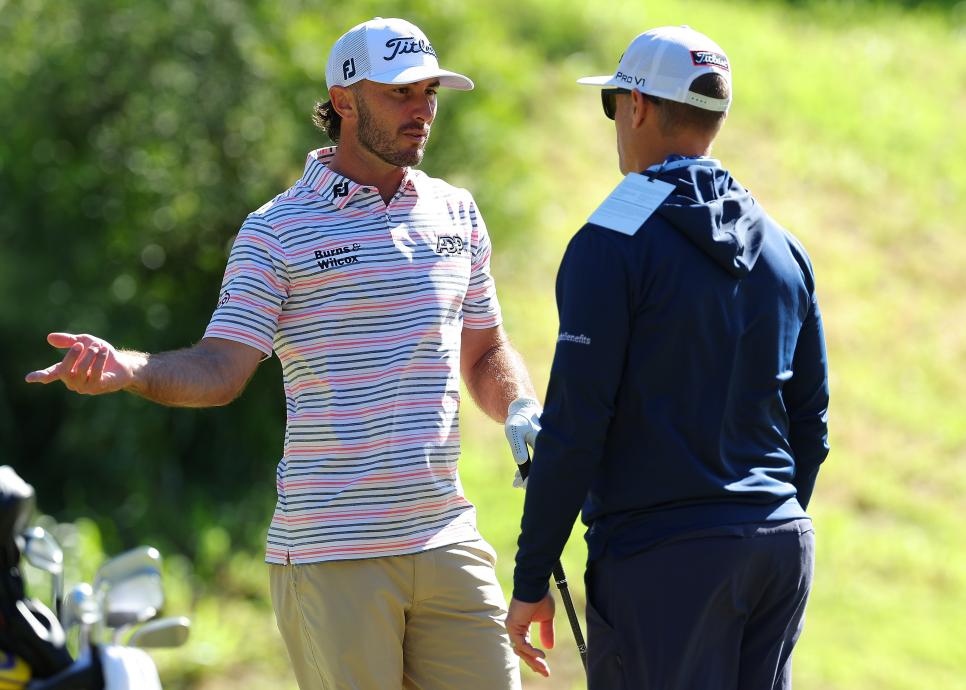Max Homa works with with coach Mark Blackburn on the driving range prior to The Sentry at Plantation Course at Kapalua Golf Club.
Kevin C. Cox
Why do tour players have coaches? The answer might seem obvious: to help them play as close to their potential as possible. But even if the coach has great answers for what the player needs, it’s not as simple as just sharing the information and throwing a switch, so to speak.
Frustration and struggle are integral parts of learning. A player has to confront those barriers and get over them to really integrate new skills. As a coach, my job is to find the right answers, and then manage the process through the frustration and struggle and to the integration part.
Those are two completely different skill sets. A good coach needs to have the technical or mechanical knowledge to find the right solution in the world of physics and physiology. He or she then also has to have the human skills to guide the changes. You have to be able to deal with highly skilled, highly competitive people who might be anxious, frustrated or angry about where things stand. There’s an art to that part, and the challenge of mixing it with the technical side and solving the puzzle is where the real joy is in my job.
When you help a player go through the full process of learning—experiencing frustration, battling through challenges and acquiring a skill—you’re helping to install belief. It’s the difference between standing on the last tee hoping you somehow hit a decent shot and getting up there knowing you can hit it because you’ve done all of the work.
RELATED: Elite players are elite athletes. Here’s how they get that way
Bryson DeChambeau’s performance at the U.S. Open is a great example. Nobody is more open to new information than Bryson, and nobody is more willing to work. On the last hole, he was willing to smash it off the tee even with the risks it presented. When he hit a poor drive, and then his recovery went into an even worse position, he faced a shot no tour player would ever want, even when it weren’t the 72nd hole of a U.S. Open. And credit to him, he hit one of the best shots you’ll ever see. But if it hadn’t worked out, I think he could’ve lived with what happened because of his belief in his skills and his conviction about the decisions he made.
Whether a player comes out on the right side of that—with the trophy—or not, the coach’s role is the same. After the smoke clears, you have to have an honest debrief about it. There’s no such thing as failure. It’s all a process of learning. What worked? What didn’t? What happens next? What do we work on today? Blowing it off or sweeping it under the rug might make the conversation a little lighter, but the best players want to be coached. They want the unvarnished truth, even if they sometimes present as if they don’t.
To make those discussions productive, you have to understand the timing of when to talk and when to stay back for a bit. And the approach needs to match the player’s way of dealing with things. When it’s framed correctly, it isn’t personal or judgmental. What ultimately should come across is that everyone in the conversation is on the same team and has the same goals. Then you get to work figuring out how to improve the outcome for next time.
What does this mean for you? Don’t let some short-term pain during your practice and improvement journey obscure the bigger goal. Getting good guidance and actually going through the grind is what makes you own it instead of just renting.
This article was originally published on golfdigest.com

